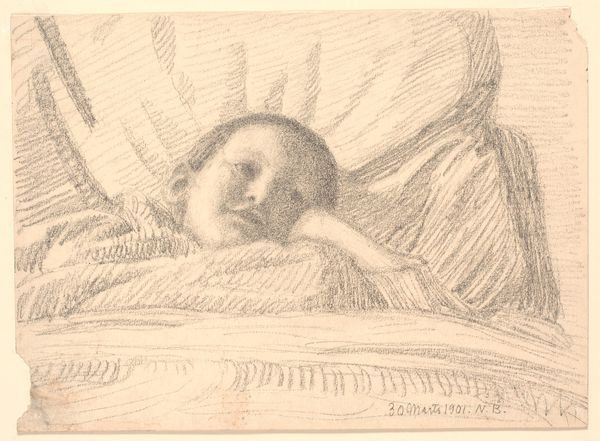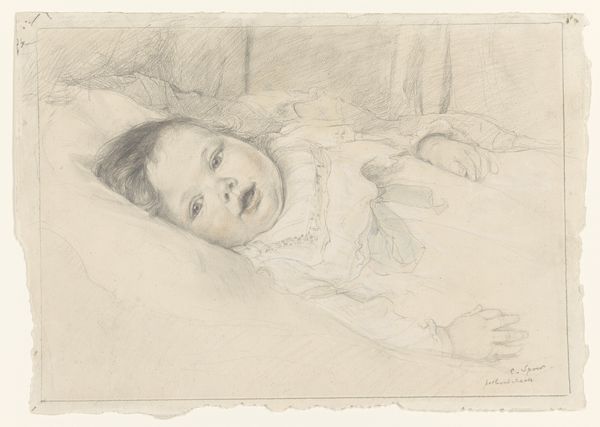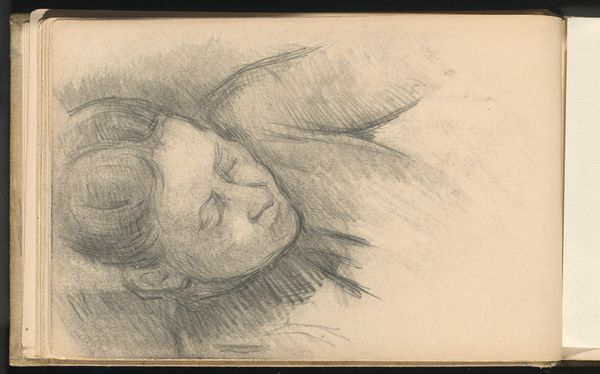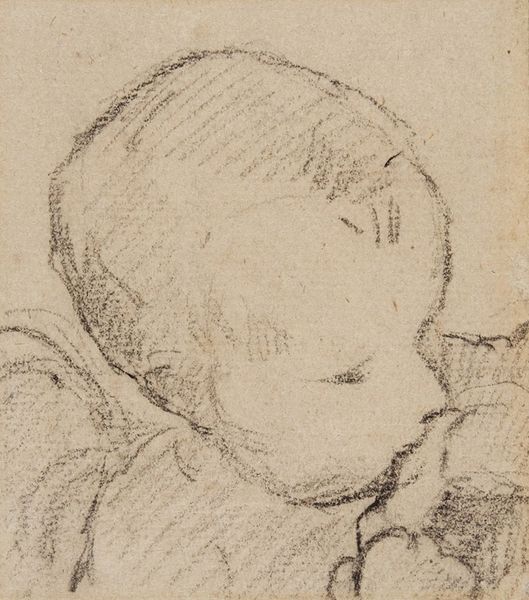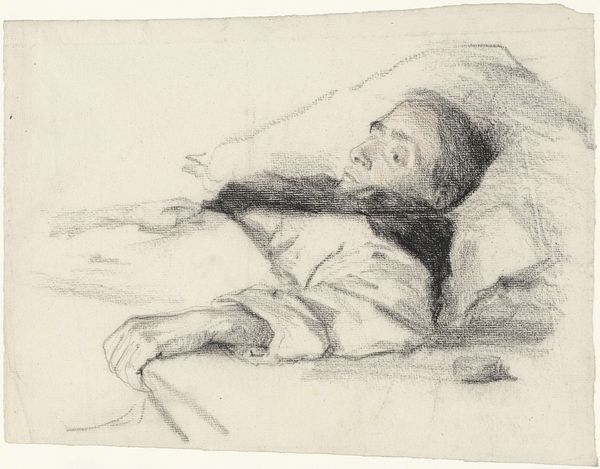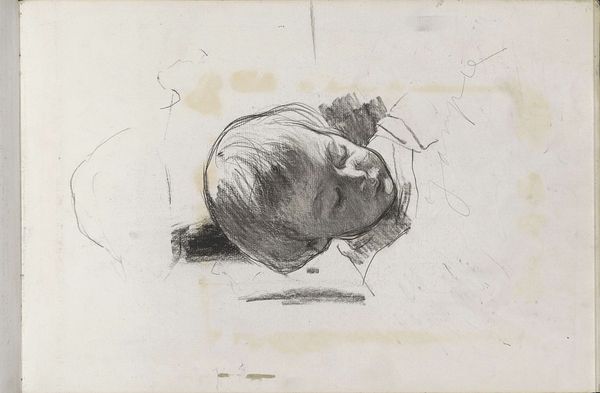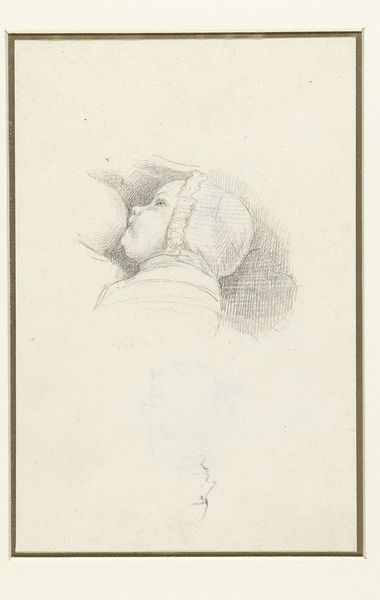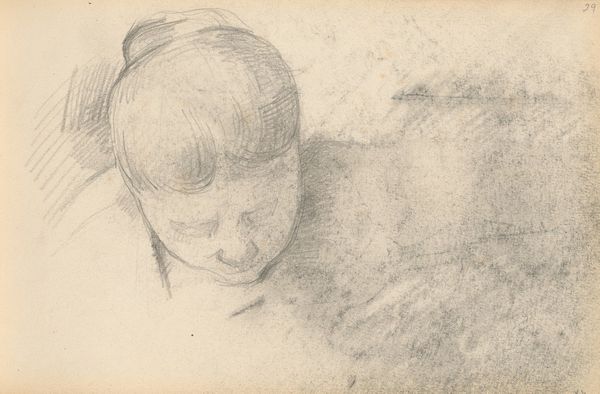
drawing, pencil
#
portrait
#
drawing
#
baroque
#
pencil sketch
#
charcoal drawing
#
figuration
#
pencil drawing
#
pencil
#
portrait drawing
#
genre-painting
Dimensions: height 234 mm, width 331 mm
Copyright: Rijks Museum: Open Domain
Curator: This drawing, titled "Slapende baby, de handjes over elkaar"—Sleeping Baby, Hands Folded—is attributed to François Boucher, dating somewhere between 1713 and 1770. It’s rendered in pencil. What are your first thoughts? Editor: Innocence and fragility. The soft lines and grey tones evoke a dreamlike state, a gentle slumber. The child’s clasped hands suggest a peaceful trust in the world. Curator: The depiction of children took on increasing cultural importance during the 18th century. Paintings and drawings became ways to codify and disseminate notions of ideal childhood. Think about shifts in social mores regarding education and the family. Editor: Precisely! This drawing speaks volumes about the changing societal attitude toward childhood. We’re moving into an era of sentimentalism and an appreciation for the vulnerability of youth, especially within the Baroque genre-painting context. The image plays on the universal symbol of a child's innocent sleep, fostering an emotional connection. Curator: We see this romanticism visualized here. Look at the delicate details—the way the light catches the baby’s cheek, the folds in the blanket, or even how the subtle use of line emphasizes a softness that is touching to observe. Editor: And observe, too, the implications for family structure. Commissioning such work suggests increased personal and domestic values, moving away from purely religious or dynastic representation. It promotes bourgeois values and expectations, especially through sentimental subjects that evoke empathy and intimacy. It serves to humanize portraits, thereby changing the role that art served as public symbol of class and prestige. Curator: Definitely, there is an emphasis here on the universal aspects of childhood as a pure, untainted state of being. Boucher really encapsulates these shifts within social values, creating images that are less allegorical and more attuned to common emotional experiences. Editor: Boucher is a master of soft persuasion in line and form, so one almost forgets he's pushing a new middle-class social script. Thinking about the baby's pose as the seat of innocence in a changing social landscape makes me see the picture very differently. Curator: Agreed. The drawing offers us a poignant window into the emotional landscape of the 18th century, revealing new perceptions of childhood that continue to resonate today.
Comments
No comments
Be the first to comment and join the conversation on the ultimate creative platform.
